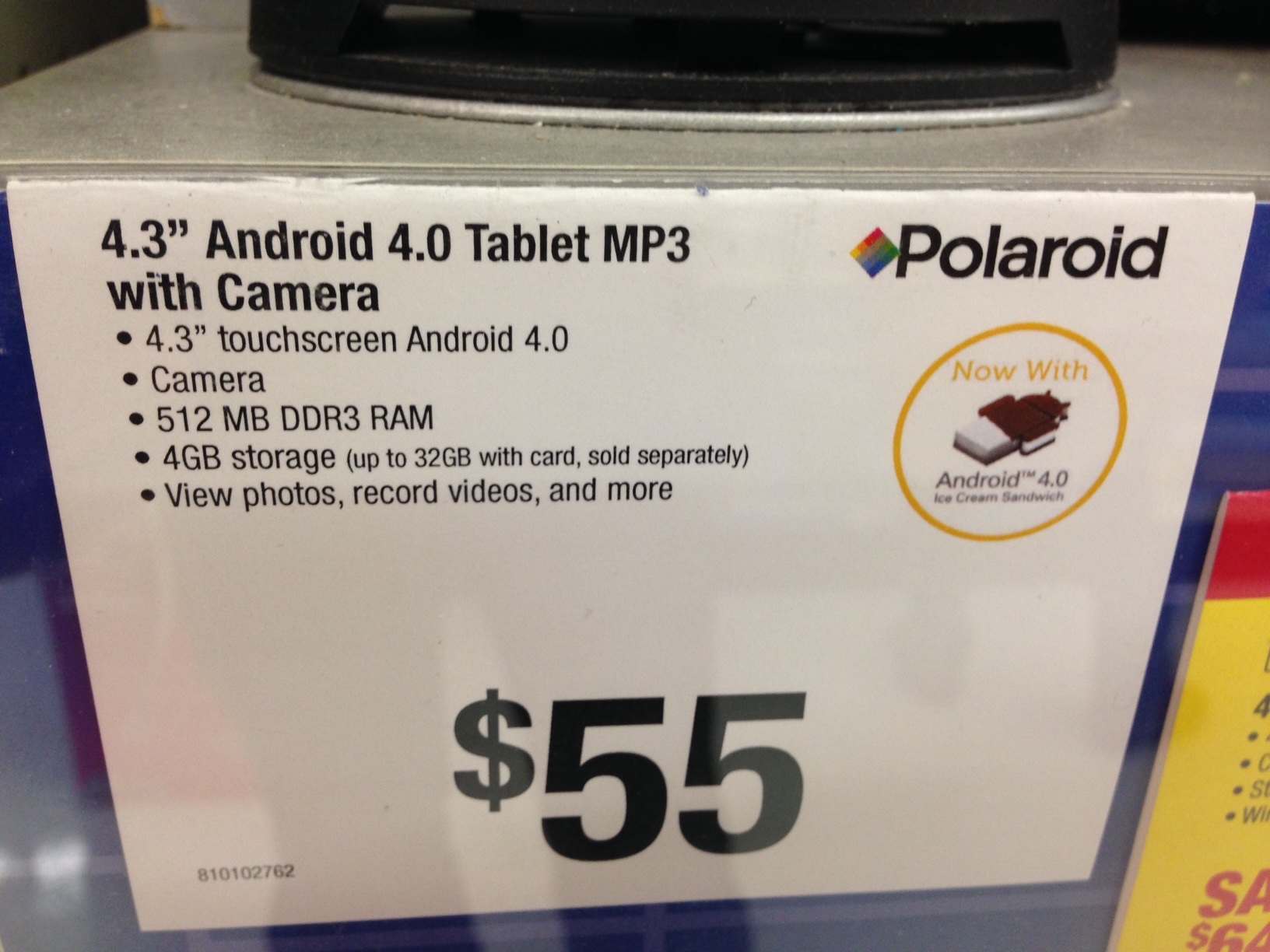Autumn is a special time of the year, especially around Halloween. On a foggy Saturday, I ventured out to the local Big Lots discount store to acquire some items for the spooky evening to come. I was prepared for many things--ghouls, ghosts, goblins--but I was not prepared for this .
Folks, I don't have monstrous Hulk hands. That is a device with a 4.3" screen that Polaroid is trying to pass off as a "tablet". This puppy can be had for the low, low price of $55. What, pray tell, does a person get for their money?
This tablet apparently comes loaded with Android 4.0 (Ice Cream Sandwich), a fact that it proudly proclaims. Granted, this version of Android is two years old, but what else can you expect for such a low price?
It comes with a camera, specifically a front-facing camera. Funny enough, this little tablet could arguably use a rear-facing camera. I've seen many people using their iPads as cameras, which always looks ridiculous. In contrast, this Polaroid tablet is closer in size to a smartphone and wouldn't look out of place snapping a pic. Of course, we can only imagine what the quality of the images taken by this tablet's camera would be. (Probably as terrible as one of those Hello Kitty cameras that are sold at drug stores.)
The RAM is a bit scant, especially considering that the Android wasn't particularly snappy in versions prior to Google's Project Butter initiative. Users will have to make sure that they don't use too many apps at once, apparently.
Speaking of apps, the meager 4 GB of storage afforded by this device won't allow for users to have many of those installed. On the plus side, the storage is apparently expandable to 32 GB via a card sold separately.
Folks, this is a terrible device. It's laughable to call this a tablet. I'm saddened by the thought of some poor soul out there having this as their first tablet experience. Now that is a scary thought.


